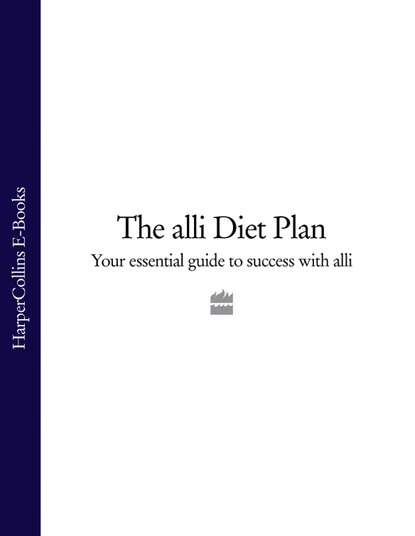По всем вопросам обращайтесь на: info@litportal.ru
(©) 2003-2024.
✖
The alli Diet Plan: Your Essential Guide to Success with alli
Автор
Год написания книги
2018
Настройки чтения
Размер шрифта
Высота строк
Поля
3. A source of protein – e.g. lean meat, fish, beans or lentils, an egg, or perhaps a small amount of cheese. Weigh these out so you recognize what a suitable portion looks like
4. A glass of water
5. Are you having any high-fat foods such as spreads or dressings? If you haven’t reached your fat target, and can include them, make sure to measure them out
6. Can you add a low-fat yogurt or fromage frais to provide calcium if you have fat and calories to spare?
Evening Meal Blueprint
You may like to make this a two- or even three-course meal if your fat and calorie targets permit. Whatever the combination of foods you choose, make sure you follow the same guidelines as for lunch.
1. A minimum of one, preferably two portions of vegetables, plain, cooked or as salad
2. A piece of fruit, possibly as a starter or dessert
3. A measured portion of protein-rich food with associated low- or reduced-fat sauces or accompaniments
4. Measured starchy foods such as potatoes, sweet potatoes, brown rice, pasta, polenta, couscous or other grains cooked with minimal fat
5. A glass of water
Also consider
If you have calories and fat left over from your meal target, you may choose a glass of wine, a small dessert or a piece of chocolate. See Chapter 9 (#litres_trial_promo) for some ideas.
Snacks Blueprint
Often the best snack is a piece of fruit along with a glass of water, but you can have a range of different types of snacks – provided they contain less than 3g of fat and are ideally 150kcal.
Remember that by choosing something that is low in GI then you are going to stay feeling fuller for longer.
Food and Your Mind
Anyone who has ever tried to lose weight knows how powerful your mind can be in constantly reminding you about how hungry you are, and making foods that are off-limits seem even more attractive than usual.
While is it not possible here to provide a comprehensive guide to the psychology of dieting, there are many tips that will help you on your way.
1. Set yourself a realistic goal, and write it down. Goals can be very personal – perhaps to wear a particular favourite outfit again, to return to your pre-pregnancy body weight, or to be ready for that holiday you are planning. Keep your goal with you so you can refer to it in moments of self-doubt.
2. Try to work out what role foods plays in your life – is it a comfort when you are unhappy or stressed? Do you eat when you are bored? By thinking this through you may be able to avoid falling into the trap of eating when you are not really hungry.
3. Plan your meals in advance, and make a note every day of what you ate and drank, your activity level and how you felt that day. Look back at it often to see if there are any links between your mood and what you did or ate. When you are feeling tempted to give up, focus on the good days and take strength from your previous successes.
4. Think about how you eat, and modify those things that are not helpful. For example if you tend to snack when you are preparing dinner, chop up carrot sticks in advance to munch on. If you are a habitual car-snacker, train yourself not to eat while in the car, perhaps drinking water instead. Have a proper meal time at the dining table rather than grazing while at the computer or watching TV. Developing these sorts of habits takes time but is worth the effort.
5. Be positive about yourself and what you are doing. Having a positive mental attitude can work wonders. Believe in yourself, and surround yourself with others who will support you.
6. When you are tempted, remind yourself how well you are doing, not listening to the negative voice within, and focus on the goal you have set yourself. If you do succumb to temptation, don’t give up. Just keep going, focusing again on your goal.
7. Don’t forget the psychological benefit of being active. Go for a 10-minute brisk walk rather than 10 minutes of munchies. Enlist family and friends to exercise with you, and make this a regular event.
8. Talk positively to people – including yourself – about what you are doing. This will help strengthen your willpower and remind you of the benefits of your diet rather than feeling it is all about giving up things.
Chapter 3 The Menu Plans (#)
In this chapter you will find a range of different menu plans to help guide you through and beyond the time you are dieting. There are menu plans to fit the different calorie and fat bands of your diet. Included here are four weeks of daily menus for the 1400-calorie diet, the one that is most commonly followed. Additionally there is one menu plan per week for each of the 1200-, 1600- and 1800-calorie diets. These plans may also be useful if you are just starting out on the diet, or are coming to the end of your diet and want to maintain weight rather than lose it.
The menu plans can be used in several ways. When dieting, some people like to know exactly what they can eat down to the last lettuce leaf. If you are one of those people the menu plans are perfect, as they describe each meal and snack. They provide links to the recipes in Chapter 4 (the recipe name is in italics). If there is a meal you don’t fancy, you can find a substitute by looking at Chapter 4, by searching for a ready-prepared option in Chapter 6 or by putting ingredients from Chapter 9 together.
Other people use menu plans for inspiration, gleaning ideas for meals but making up their own menus. If this is the way you like to diet, then you can easily find information to suit your calorie and fat targets by using chapters 4, 6 and 9. It is worth writing down your own menu plan so you can check that you keep within your fat and calorie targets.
A Reminder of the Fat and Calorie Targets
The table that follows shows you the maximum number of calories and grams of fat you can eat. The menu plans are worked out on a daily basis, so use the information in the first two columns. If you are making up your own meal plans, you will need to ensure that you keep to the fat targets for each meal or snack.
Menu Plan Instructions
The table below suggests how you may break your daily fat and calorie allowance down.
• Each day you should have 300ml skimmed milk (or non dairy equivalent) for cereals, drinks and in cooking. (This helps ensure you are having adequate calcium.) Measure it out at the start of the day, so you know how much you are using.
• Drink at least 1.5 litres (6 x250ml glasses) of water a day in addition to other drinks. You may have low calorie squashes and unsweetened herb or fruit teas in addition to tea and coffee, but do not forget to count in sugar or milk you are adding.
• Drinks such as juices, smoothies and alcoholic drinks all add calories so unless stated are not included in the menu plans.
• Make sure you measure everything out. The menu plans give weights and, where appropriate, household measures.
• Recipes from the book are shown in italic text. If you don’t like the recipe, simply find another with similar fat and calories by looking at the charts at the end of Chapter 4, by choosing a ready made option from one of the supermarkets or by using Chapter 9 to construct your own meal.
Day 1
Day 2
Week 1
Day 3
Day 4
Day 5
Day 6
Day 7
Also included: each day you may have 300ml skimmed milk (or non-dairy equivalent) for cereals and drinks. Drink at least 1.5 litres (6 x 250ml glasses) of water a day. Drinks such as juices, smoothies, alcohol etc. are not included unless stated.
Day 1











